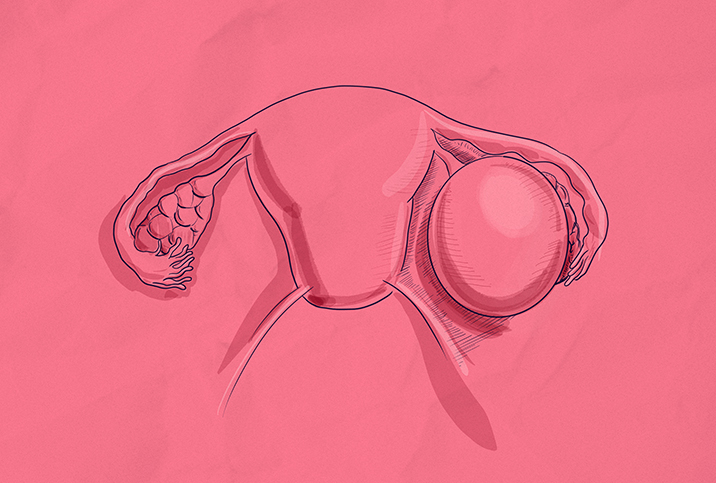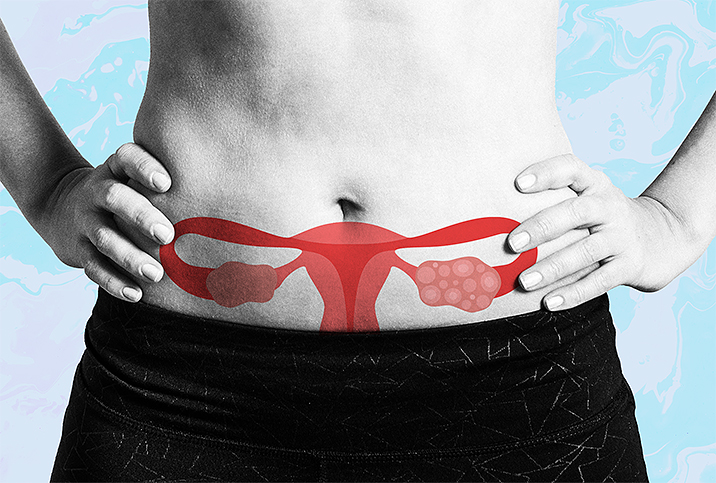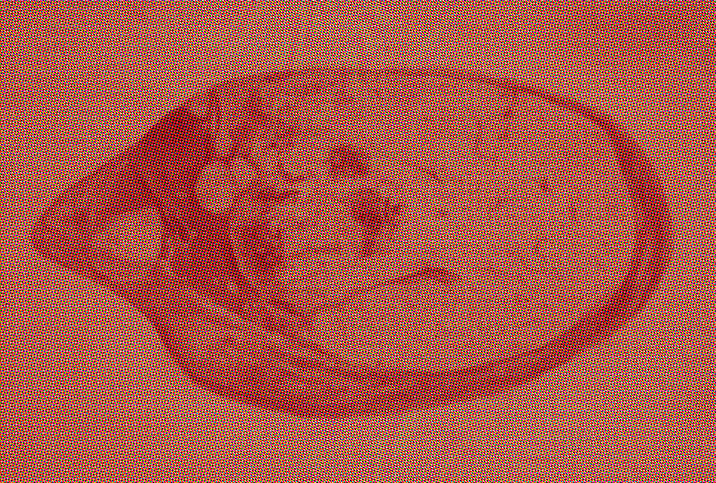Is An Ovarian Cyst Causing Your Stomach to Bloat?

Are you pregnant or is it ovarian cyst bloat? It may be hard to tell considering the two conditions can physically present similarly.
Like a pregnancy, where a woman's stomach becomes larger and rounder, ovarian cysts can alter the appearance of the belly area. Cysts develop in a fluid-filled sac in one or both of the ovaries or on the surface, while fetuses develop nearby in an amniotic sac in the uterus.
One of the most common side effects of ovarian cysts is abdominal distension, a belly abnormally swollen outward, also called ovarian cyst bloat. As ovarian cysts get bigger, so can your belly. Other common symptoms of ovarian cysts include abdominal and pelvic pain, bloating and fullness in the abdomen area. In general, cysts are prevalent in premenopausal women and often go away on their own.
How big can ovarian cysts get?
Huge ovarian cysts are also common and don't always look like pregnancies or bloated stomachs.
"According to a well-designed study in 2013 by Pavlik, almost 50 percent of women had an abnormal pelvic sonogram on their initial visit, but 63 percent resolved by the next sonogram," said Mary Hinckley, M.D., a reproductive endocrinologist and IVF medical director at Reproductive Science Center in the San Francisco Bay area.
Cysts can vary in size from half an inch to 4 inches and even larger, according to Cedars-Sinai hospital in Los Angeles. Surgery isn't recommended for ovarian cysts unless they're larger than 50 to 60 millimeters, which is about 2 to 2.4 inches in size. At 10 centimeters, surgery is generally required.
In recent months, some women have been taking to TikTok to post about their ovarian cysts that look like they cause pregnancies or bloated stomachs. A few users are even throwing baby showers for their ovarian cysts. TikTok creator @Rockiesoto33 shared a video of her party, where her friends had decorated her house with a banner reading, "It's a Cyst!"
@rockiesoto33 Here’s my early birthday party/ ovarian cyst (baby shower) 😂😂😂🥹🥰 s/o to my family & friends for the best night.
♬ long way 2 go remix - 𝘦𝘥𝘪𝘵𝘴𝘭𝘢𝘺𝘻 ༊*
Another creator, @arianna.palmaa, showed off her distended belly and then her sonograms that revealed an ovarian cyst the size of an orange. If you search "#ovariancysts" on TikTok, you'll find a massive library of videos that have acquired more than 147 million views.
The comment sections of these videos are usually a mixture of shocked people and empathetic users who've experienced something similar. The main source of shock seems to be over how big an ovarian cyst can get before someone needs to get it surgically removed.
When is surgery necessary for an ovarian cyst?
Typical cysts are usually less than 2 inches in size. In extreme cases, in which ovarian cysts look like a pregnancy, cysts can exceed 4 inches.
In 2018, an Alabama woman had a 50-pound cyst removed that turned out to be a type of cyst called mucinous cystadenoma, which is normally a benign tumor. Many people thought she was pregnant as her belly continued to swell and distend over time. These cysts can be dangerous if they're not removed because they can press against vital organs. As time goes by, they won't go away on their own and can continue to grow.
"People can look pregnant with cysts because the cyst fills the same place that a growing pregnancy would fill. They stretch out the abdominal muscles and skin and generally fall to the midline as they enlarge, rather than staying on one side of the pelvis," Hinckley said.
How do ovarian cysts get big enough to cause a bloating stomach?
There are a few types of ovarian cysts and most regress on their own. But some can become large, cause a distended belly and require surgery. Kecia Gaither, M.D., a board-certified OB-GYN and maternal-fetal medicine expert in the Bronx, New York, explained the different types of cysts:
- Physiologic ovarian cysts. They generally appear and regress in conjunction with the menstrual cycle.
- Pathologic masses or tumors. These can be cystic or solid, benign or malignant, and they're not associated with the menstrual cycle. These masses can grow quite large.
- Chocolate cysts. These cysts are filled with old blood due to the infiltration of endometrium-like tissue within the ovary.
"Cysts become big because they fill the pelvis and displace the bowel into the abdomen, which causes abdominal distention. In addition, some cysts cause irritation of the bowel or bladder and inflammation, which causes bloating," Hinckley explained.
How to prevent and treat ovarian cysts
Unfortunately, you cannot prevent ovarian cysts, but you can detect them early, Gaither said.
"Regular gynecologic evaluations assist in early detection," she said. "Any increase in abdominal girth, abdominal pelvic pain, early satiety and a family history of ovarian cancer should prompt visits to your gynecologist for a thorough history, physical, laboratory, radiologic and, in the case of family history of ovarian cancer, a genetic evaluation."
If your doctor diagnoses you with an ovarian cyst, they may choose to wait and watch—as most cysts resolve themselves—or they may suggest surgery. Birth control pills may also be prescribed to keep ovarian cysts from recurring.
If for whatever reason you're looking for a new doctor, Giddy Telehealth takes the difficulty out of the search. The easy-to-use online portal provides access to hundreds of healthcare professionals who have expertise across the full scope of medical care. Many of them specialize in women's health and offer same-day video visits.


















